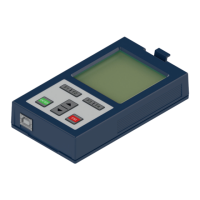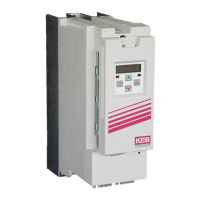Since the position for SinCos-SSI encoders is mainly determined from the 1Vss
signals and the SSI position serves only for monitoring (=> see "Absolute encoder",
6.1.2.1, page 218), it is recommended to maintain the clock frequency at 100 kHz.
For SSI encoders, the position is cyclically clocked synchronously to the control
grid. Depending on the clock frequency and data word length, reading out can take
more time than the control grid length. Then the position value is not longer read
out in each control grid cycle, but so many cycles are omitted until the read out is
completed.
The SSI telegram length in μs is calculated as:
(ec40 + ec41) / clock frequency [MHz] + 20 µs processing time
Time pattern SSI po-
sition
Time pattern SSI
position
The missing position values can have a negative effect on the control characteris-
tics of the drive if an SSI encoder is used as motor feedback. The influence for the
position control is lower.
The telegram length can be decreased with higher clock frequency, but the en-
coder, line lengths, line capacities and running times limit the max. possible clock
frequency.
The monoflop time of the encoder (i.e. the pulse off time which must be maintained
after reading out of a position value, in order that the encoder determines a new
position value) must not be higher than 60 μs for a switched on channel and not
higher than 180 μs for both switched channels.
With standard SSI encoders it is in the range of 10 to 20 μs.
Allocation of the SSI position to the 1Vss signals ec44 SSI allocation absolute /
incremental position
Only for SinCos-SSI encoder:
SSI allocation absolute / incremental position
Allocation of the SSI position to the 1Vss signals.
The angle is adjusted within a signal period where the absolute SSI position
is 0.
The data must be taken from the encoder data sheet.
At the position where the absolute SSI position is 0, the high resolution (i.e. the po-
sition within an incremental signal period) also has a position angle, which can be
entered in this parameter.
Without this setting, position deviations of one signal period (4 increments) can oc-
cur at higher signal frequencies, which can be toggled by the position correction
function.

